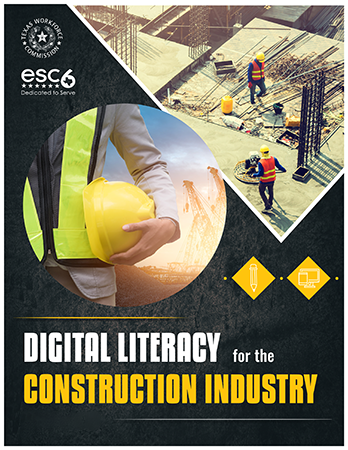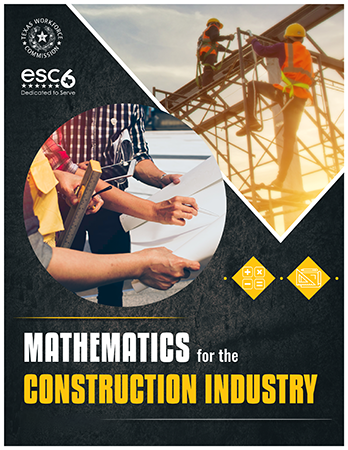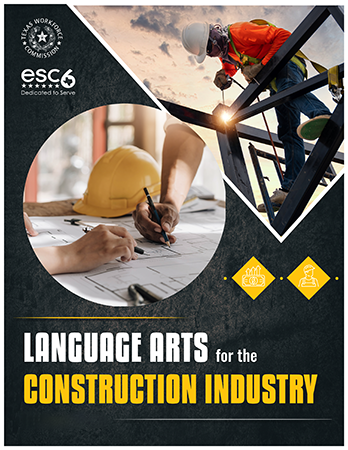
Texas Adult Education & Literacy Hotline: |
|
|
Digital Literacy, Mathematics, and Language Arts
The Career Pathways Profession Development Center (CPPDC) housed at the Region 6 Education Service Center (ESC), received funding under the Texas Workforce Commission’s Middle Skills Initiative to develop an AEL curriculum that supports career pathways in construction trades. The goal was to develop a curriculum for construction industry employees or those entering the construction trades, that will allow successful entry into middle skill jobs by developing the basic skills they need to advance in their chosen construction trade.These courses will use hands-on activities to teach you the skills needed for working in the construction field including digital literacy skills, math skills, and language arts skills.
See the descriptions below, and download the modules free of charge, from the links provided.
Module 1: Digital Literacy for the Construction Industry |
|
 |
This course content is aligned with the Texas Adult Education and Literacy Content Standards 3.0 and O*NET OnLine elements, as well as an adapted adult digital literacy framework from the Maryland Department of Labor. This course is designed for you to use hands-on activities to teach your learners the basic digital skills needed for working in the construction field, with a focus on computer-based skills, like writing emails and creating documents and spreadsheets. Learning these skills will enhance employee opportunities for promotion and job-related mastery across the construction industry. Upskilling the workforce ensures employers that potential employees are equipped to participate in the evolving digital literacy landscape. By the end of this course, you will be able to:
|
Module 2: Mathematics for the Construction Industry |
|
 |
This course content is aligned with the Texas Adult Education and Literacy Content Standards 3.0 and O*NET OnLine elements. This course is designed for you to use hands-on activities to teach your learners the basic math skills needed for working in the construction field, with a focus on fractions, decimals, and measurement. Learning these skills will enhance employee opportunities for promotion and job-related mastery across the construction industry. Upskilling the workforce ensures employers that potential employees are equipped to participate in the evolving math-minded construction landscape. By the end of this course, you will be able to:
|
Module 3: Language Arts for the Construction Industry |
|
 |
This course content is aligned with the Texas Adult Education and Literacy Content Standards 3.0 and O*NET OnLine elements. This course is designed for you to use hands-on activities to teach your learners the basic skills needed for working in the construction field, with a focus on language arts related skills for reading, writing, oral and written conventions, research, and listening/speaking skills. Learning these skills will enhance employee opportunities for promotion and job-related mastery across the construction industry. Upskilling the workforce ensures employers that potential employees are equipped to participate in the evolving language arts-minded landscape. By the end of this course, you will be able to:
|